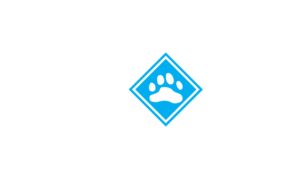Landowner Spotlight is an ongoing series here on the CTA Blog where we feature Vermont landowners who generously host the Catamount Trail on their land. Approximately half of the Catamount Trail passes through private land, and the other 50% through public land; we are sincerely grateful to all the folks who permit the Catamount Trail to pass through their land. Today we are spotlighting TransCanada, an energy company with significant hydropower projects in Vermont.

Last week, Amy and I drove down to Section 3 of the Catamount Trail to scout a series of work projects in the area. We were joined by CTA Trail Chiefs Tim Marr and Alan Binnick, who maintain Sections 3 & 4. Sam Brakeley, founder of Hermit Woods Trail Builders, and 2015 Catamount Trail thru-skier, joined us to weigh in on trail improvements. Brandon Kibbe, a Northeast Land Agent for TransCanada, rounded out our merry trail inspection squad.
We began our hike from the Lind Lane trailhead, hiking along the level ground of an old railroad. Before long we came across the first of our trail problems–a jumble of large boulders and tree roots, tilting precariously down the bank towards the East Branch of the Deerfield River. There was a possible reroute option, but it would mean a huge amount of work to bypass this troublesome but short section. We decided to focus on improving the existing route with rock work.
As we continued to hike, Brandon shared some of TransCanada’s vision for this land. Most of the land is conserved with the Vermont Land Trust. Additionally, due to their FERC energy licensing, TransCanada is required to manage these lands for recreational use in addition to hydropower. To that end, they had installed several durable aluminum GatorBridges across waterways, and were working to recover damaged trail from Hurricane Irene. We inspected several stream crossings, looking for ways to enhance the trail for both skiers and hikers. One stream crossing was bridged by a long, slippery log. We decided to re-route the crossing upstream to a less steep part of the bank. Another stream had washed out a long wooden plank bridge. The stream bed had risen up to the level of the bridge and buried the remains of the bridge with stone. Because of the changes to the stream bed, we won’t be reinstalling a bridge for now; instead, we’ll clear out brush along the stream to make the approach easier for crossing.
Along the way, we were treated to several wildlife encounters: a beaver swimming across Searsburg Reservoir, the sounds of grouse drumming, and wood warblers calling from the forest and wetland edges. All around us woodland flowers were bursting into bloom–starflower, wood anemone, trout lily, to name a few. This is an exceptional piece of land, and we are fortunate to have such an engaged partner in TransCanada in our work on the Catamount Trail. There’s lots of work to be done on this land, and we’ll be tackling it later this summer with volunteer trail work crews.









